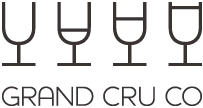- Details
- Written by Henry Conway
- Category: News
- Hits: 1653
Add a touch of sparkle to your Christmas !
This year, get your Christmas sorted at Grand Cru ... we select the best wines that won’t break the bank !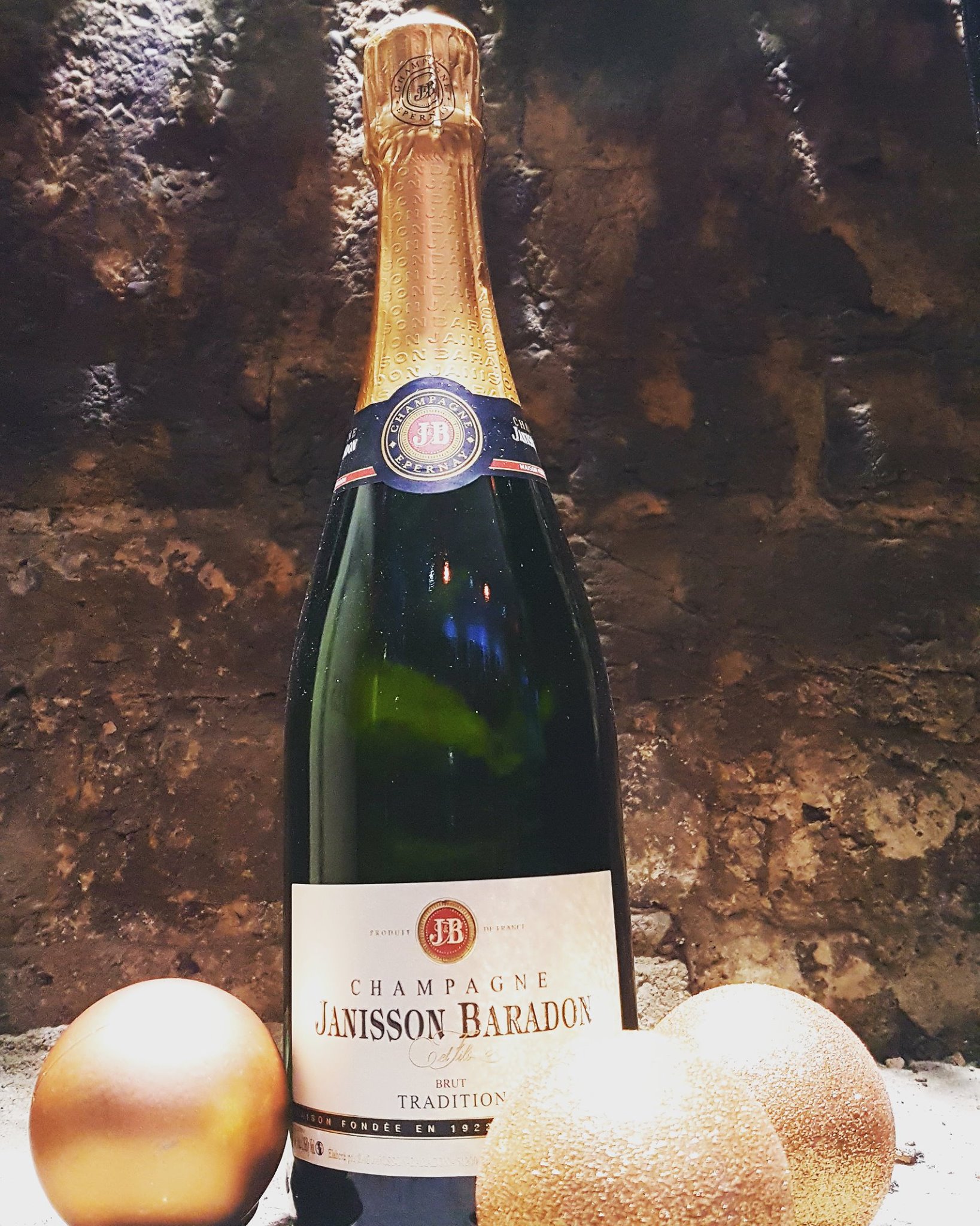
Come and try them all for FREE … And remember ! When you purchase 12 bottles you always get a 15% discount plus FREE delivery in the local area (within 5 miles).
CHECK OUT OUR SPARKLING SELECTION BY VISITING THE LINK BELOW !!
http://insidekentmagazine.co.uk/best-of-the-fizz-for-the-p…/
Cheers !
- Details
- Written by Henry Conway
- Category: News
- Hits: 1903
At Grand Cru Co we select the best wines for this Christmas and New Year, that won’t break the bank !
Come and try them all for FREE … And remember ! When you purchase 12 bottles you always get a 15% discount plus FREE delivery in the local area (within 5 miles).
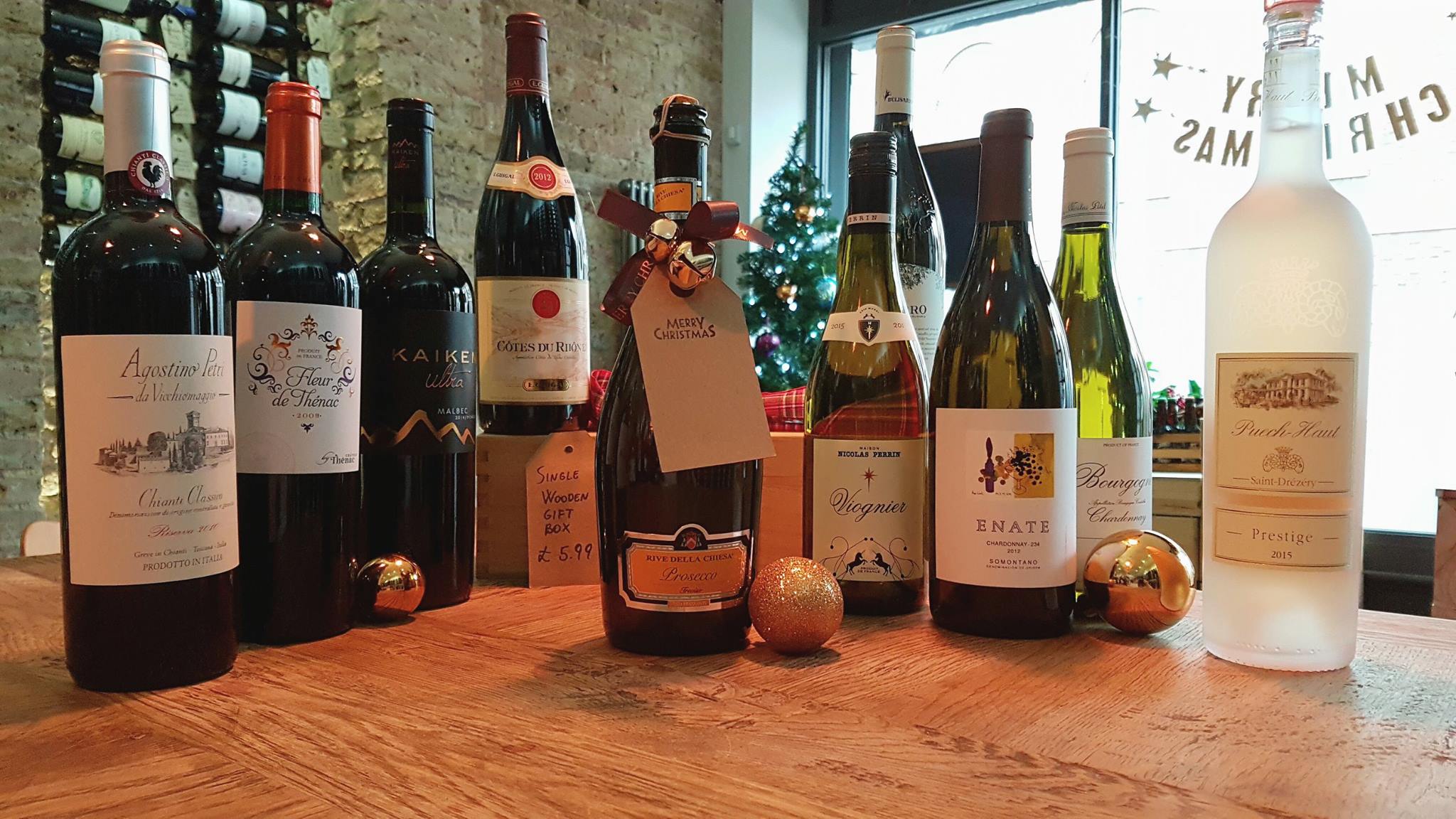
Rive della Chiesa Prosecco Frizzante NV at £9.99
Characteristically fruity with hints of golden apple and peach, this is a brilliant, light-straw coloured wine which is slightly sweet to the taste. Excellent with desserts, it is suitable as an aperitif wine, or with various hors d'oeuvres and lean dishes.
Enate 234 Chardonnay 2012 at £8.75
Very bold straw yellow colour. Intense and clean nose, which releases fresh and varietal aromas such as golden apples and peach. Good initial attack which flows into a fresh, agile, large and tasty mid-palate which keeps all of these fruit flavours. Very well integrated acidity which makes it perfectly balanced and flavoursome.
Viognier Nicolas Perrin 2015 at £11.95
Pale gold in colour with bright undertones. Aromatic, this Viognier has notes of citrus fruit and white flowers. The wine is crisp and mineral with good tension on the palate and a lovely finish.
Château Puech Haut - Prestige Rosé 2015 at £13.95
Magnificent pale robe, complex notes with hints of citrus white fleshed peach and tropical fruits. Generous palate characterized by ripe citrus fruit lifted by beautiful acidity.
Fleur de Thenac Bergerac 2009 at £9.95
Complex nose which draws you in towards the wine’s depth and richness. Red fruits mixed with roasted hazelnuts and spicy vanilla oak. This is a powerful yet smooth and balanced wine.
Guigal, Cotes du Rhone 2012 at £10.95
This full-bodied wine offers a robust core of dark fruit, and savoury white pepper notes that make it a superb food wine.
Chianti Classico riserva Agostino Petri 2010 at £12.25
Combining tradition and innovation guarantees an excellent and fruity structure to this bold wine, yet it’s well balanced by an oak fullness. As the vineyard is more than 20 years old, this is a pretty low-yield vintage which guarantees excellent wine quality and combines vigour and high potential for just the right ageing.
Kaiken Ultra Mendoza Malbec 2013 at £12.95
Brilliant, deep ruby-red, with a wonderful display of rich aromas.The nose is enticing and spicy with black fruit aromas of blueberries and blackberries. Good structure and soft tannins lead to a finish that is fresh, complex, and long, with fruit notes and subtle undertones of rosemary, thyme, and dry flowers.
Get your Christmas sorted with us !
- Details
- Written by Henry Conway
- Category: News
- Hits: 1846
Pesticide protesters raise pressure in Bordeaux
Campaigners in the Bordeaux wine region have staged what they say will be the first of several actions to highlight the purported risks of pesticide use for vineyard workers and locals. Protesters in the Médoc on Bordeaux‘s Left Bank planted a series of un-marked white crosses last weekend and erected placards warning of the risks of pesticide-related illness.
Marie-Lys Bibeyran, of protest group ‘Médoc Pesticides Collective’, addressed vineyard workers directly in a statement. ‘We are here for you,’ she said. ‘You should not have to choose between health and work.’
Pesticides have re-emerged as a hot topic in some parts of the wine world in 2016. That is especially true in the Bordeaux area, which was the focus of a provocative French television documentary earlier this year. The Aquitaine region of south-west France, which encompasses Bordeaux, is the largest user of pesticides in the country.
Bordeaux winemakers say that they have been pro-active on the issue. In July 2016, the Bordeaux wine council, CIVB, launched a new strategy to combat pesticide risks in association with local authorities.
They said that winemakers would re-double efforts to cut pesticide use as quickly as possible, within the French governmnent’s national plan for cutting pesticide use. The CIVB also wants all wineries to achieve sustainable certification. Earlier this year, it said that 45% of estates were certified as sustainable.
That plan, known as Ecophyto, envisages a 25% cut in pesticide use by 2020 – versus 2008 levels – and a further 25% cut by 2025. The original target set by the government – a 50% reduction by 2018 – will not be met.
Put a minimum price on alcohol, says UK health body
Senior health advisers in England have used the beginning of Christmas party season to call for higher prices on wine, beer and spirits via a minimum pricing law.
Alcohol is too cheap and it is damaging people’s health to unacceptable levels, according to Public Health England. It called on the government to re-consider a minimum pricing plan for wine, beer and spirits, and it said that a current ban on selling alcohol below cost price plus VAT was not severe enough.
Minimum pricing has returned to the public spotlight in recent weeks. European winemakers have joined with Scotch whisky distillers to challenge Scotland’s plan to introduce a floor price of 50 pence per unit of alcohol on all drinks. The case was set to be heard in the UK’s Supreme Court. The previous UK government in Westminster rejected the idea of minimum pricing in 2013, and many in the drinks trade argued that the policy would do little to affect consumption.
But Public Health England urged ministers to re-consider. Overall consumption of alcohol may have fallen since 2008, but liver disease has increased by 400% since 1970, says its new report on the public health burden of alcohol. Alcohol-related illness is costing the country’s economy between 1.3% and 2.7% of GDP, the report says.
The group rejected the drinks industry argument that minimum pricing would be a blunt tool that would hurt responsible drinkers as well as those drinking to excess. ‘The MUP measure has a negligible impact on moderate drinkers and the [pub and restaurant] trade,’ it said.
The drinks industry-backed Alcohol Information Partnership said, ‘Minimum unit pricing is an untested policy built on modelling and forecasting. The evidence behind its claims is poor and controversial.’
The UK government tightened its advice to drinkers this year, warning that no one should consume more than 14 units of alcohol per week. There has been little sign this year that the government is keen to shift its stance on pricing. Such a policy might also prove difficult given the current concerns over rising consumer prices in the wake of the Brexit vote.
The science of two alcohol free days per week
Is it necessary to have 'several alcohol free' days every week and, if so, should those days be consecutive? Dr Michael Apstein, in the rare position of wine writer and liver doctor, gives his view to Decanter.
Health officials in several countries, including the UK, have advocated for people to have at least two alcohol free days per week. The UK government’s new proposal on alcohol guidelines says drinkers should have ‘several’ alcohol free days weekly.
But, how useful is this advice? And do the days need to be consecutive?
I believe advice that everyone should have at least two alcohol free days a week is a well-intentioned effort to combat the enormous adverse impact that alcohol has on some individuals’ health and well-being.
The question, of course, is whether that strategy will be effective in reducing the well-known damages of excessive drinking to individuals and society: liver disease, neurologic problems, socially unacceptable behaviour, and driving under the influence, to name just a few.
Perhaps the government has studies indicating that it will, but I’ve not seen any suggesting that two ‘dry days’ a week will have an impact on the alcohol abuse problem.
A better approach, which granted would be more difficult to implement, would be to identify those individuals who drink too much and convince them to reduce their alcohol intake.
A potential downside of the government’s advice is that is might be a rationale for individuals to over-indulge the remaining days thinking being dry for two days a week willprotect them from the ravages of alcohol abuse. It will not.
- Details
- Written by Henry Conway
- Category: News
- Hits: 1659
This Christmas, treat yourself and your loved ones with something special !
From an excellent Champagne and a crisp white Burgundy to rich Malbec and complex Rioja, our selection offer quality at unbeatable value.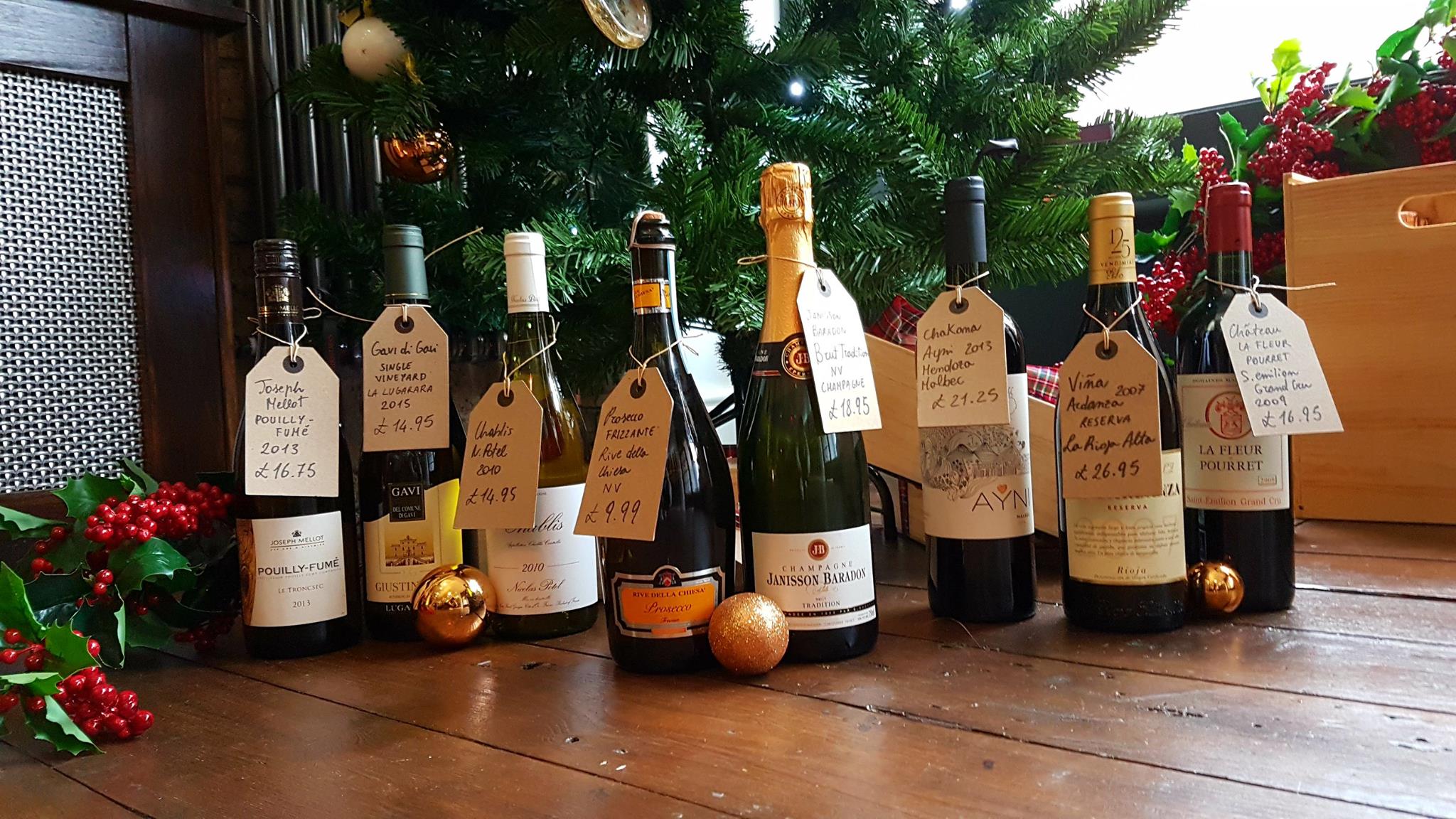
Come and visit us … you can try these and 40 other wines for FREE ! Our prices start from as little as £8.60.
And remember you always get a 15% discount and free delivery (within 5 miles) when you purchase a 12 bottles case.
Order online at www.grandcruco.com
Happy Holidays from Grand Cru !
- Details
- Written by Henry Conway
- Category: News
- Hits: 1658
This Christmas impress your friends with a superb gift :
Janisson Baradon Brut Tradition NV at £18.95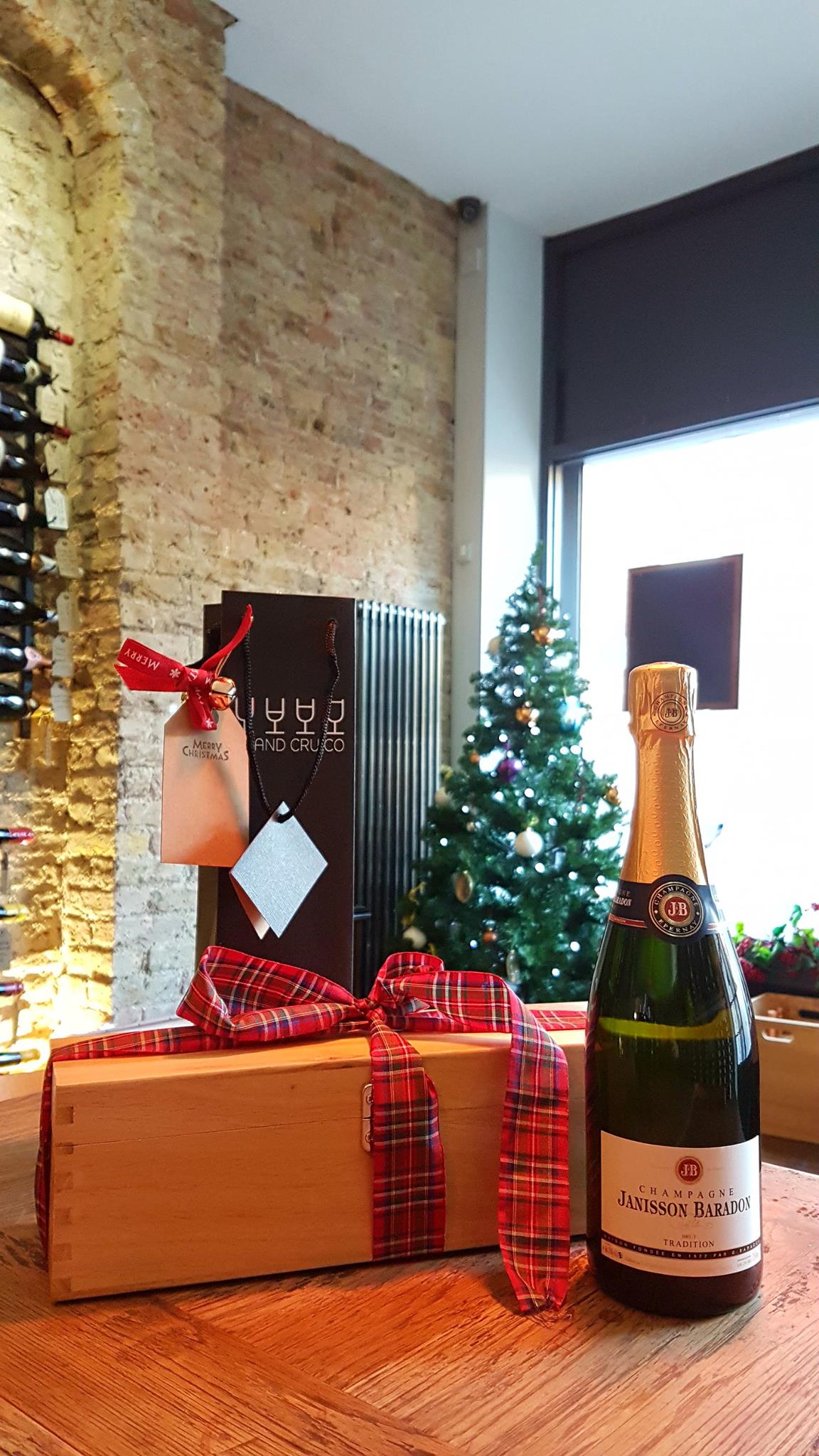
Made by a small champagne house, Janisson-Baradon, located in Montagne de Reims a wooded plateau based between Epernay and Reims. The wines are produced with a focus on natural methods, meaning the abandonment of both herbicides and pesticides.
Their vinification style is a mix of steel and wood with malolactic fermentation. All the wines are characterized by long lees ageing and 6 months minimum resting period between disgorgement and release.
The blend is a 50% Pinot Noir, an attractive 40% Chardonnay and 10% Meunier. The reserve wines are aged in oak giving richness and body but the low dosage (7g) maintains the freshness and acidity.
This is a light yellow, almost straw colour. Big nose of white flowers aromas with a gorgeous mousse on top. Stout and sharp mouth all at once. Pleasant and decorated with a fruity flavour coating the mouth. A quality unbeatable at this price.
Cheers !
www.grandcruco.com
- Details
- Written by Henry Conway
- Category: News
- Hits: 1856
Breakthrough may save Cabernet Sauvignon from climate change
Landmark research paves way to full genome map of Cabernet Sauvignon that could help winemakers battle a changing climate, writes Amanda Barnes after speaking to UC Davis researchers in California.
UC Davis revealed the first draft of the genome of Cabernet Sauvignon, and researchers are now working on reconstructing the complete 19 chromosomes of the genome and assigning functions to genes within it.
The draft genome was generated using cutting-edge sequencing technology and a novel computer algorithm and was the result of a collaborative effort between plant geneticist Dario Cantù in the Department of Viticulture and Enology and Pacific Biosciences, a California company specialised in DNA sequencing. It is a significant breakthrough nearly a decade after the Vitis Vinifera common grapevine genome was first sequenced in 2007.
‘The overall goal is to understand the genetic makeup of wine grape varieties,’ said Cantù. ‘We know that different varieties result in wines with distinct flavours and aromas, our objective is to determine what genes are responsible for the unique characteristics of each variety.’
As well as decoding the DNA of the world’s most popular red variety, Cantù believes it could revolutionise the way we breed varieties in the future and give birth to a new generation of grape varieties better suited for climate change.
‘This information will help guide breeding efforts to generate new varieties that have novel combination of flavour and aromas, but also are better adapted to worsening climatic conditions, particularly those high-quality viticulture sites that will soon become less favourable because of increasing temperature and drought.’
Drought has been focusing minds in California, where winemakers part-fund UC Davis work.
The complete, annotated genome sequencing for Cabernet Sauvignon will take two more years to complete. However this research will make decoding other varieties in the future quicker and more cost effective.
‘We started applying similar approaches to other important varieties to understand the genetic features that characterise them,’ said Cantù. ‘It’s reasonable to say that we can now generate a high-quality draft of a grape genome for around US $60,000 in about a year.’
New system claims best protection yet against wine fraud
Counterfeit wine expert Maureen Downey is set to launch a new system to combat the growing issue of wine fraud.
In partnership with diamond-certifiers Everledger, the Chai Wine Vault system promises to secure wine’s provenance and authenticity by storing it in a digital ledger that uses a ‘blockchain’ system – essentially a database where each record is marked with a timestamp and can not altered once it is sealed. It is the format used by bitcoins and other cyber currencies.
Fine wine forgery – highlighted in the recent film Sour Grapes – is hard to quantify by its nature but has been increasingly in the public spotlight following the trial and conviction of Rudy Kurniawan in the US in 2013.
To authenticate a bottle of wine, the Chai Method collects over 90 data points with high resolution photography and records of a bottle’s ownership and storage. It uses this information to create a digital thumbprint that forms the ‘blocks’ of the database.
This then travels with the wine, being updated as the bottle changes hands. Licensed retailers, warehouses, auction houses and other sale platforms can link to the bottle’s digital identity to verify provenance.
‘Many of the single layer, high tech solutions to combatting wine fraud such as RFID chips and Prooftags are either failing (in some instances by peeling off), or will be counterfeited themselves in the future and can possibly be used to substantiate counterfeits,’ Downey continued.
‘Until this system, authentication has had to be repeated every time a bottle was offered, because there has been no way to assure that it is the same as that previously inspected’.
Mas de Daumas Gassac reports rush on 2015 wine
High expectations for the 2015 vintage across southern France have seen one of the most prestigious estates, Mas de Daumas Gassac in Languedoc, sell all of its top red wine within six weeks.
Merchants and clients have hoovered up all 8,500 cases the Daumas Gassac 2015 red wine on pre-release in near record time, the estate said.
‘It came to a point few weeks ago where we had more orders than wines,’ said Basile Guibert, second generation co-owner and head of sales in Asia.
His brother, Samuel, co-owner and winemaker, said the estate had only seen something similar with the 2000 and 2009 vintages at the estate.
‘We had to drastically reduce allocations [of 2015] to meet everyone expectations,’ he added. The strong demand reflects ongoing confidence in a 2015 vintage that drew excitement in many French wine regions; in stark contrast to what some have seen this year.
Daumas Gassac production for its signature Vins de Pays de l’Herault red 2015 was around average for the past few years, at 107,000 bottles, according to Daumas Gassac technical sheets. UK merchants Goedhuis and Majestic-owned Lay & Wheeler were selling Daumas Gassac 2015 red on pre-release at £120 for six bottles in bond. That makes it roughly the same price as the 2009 vintage now.
